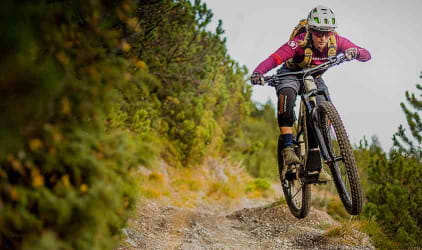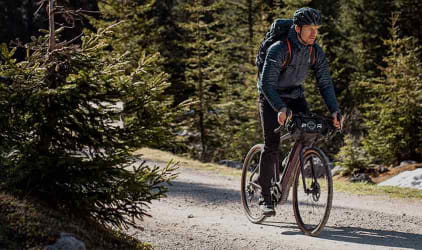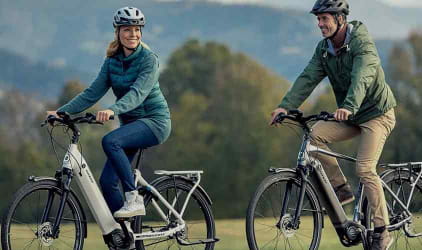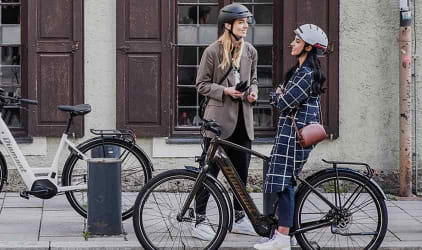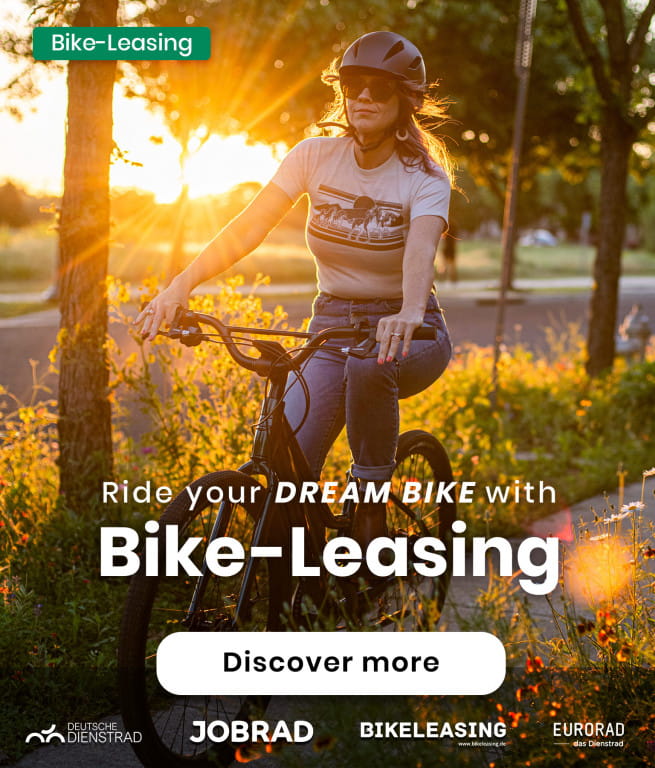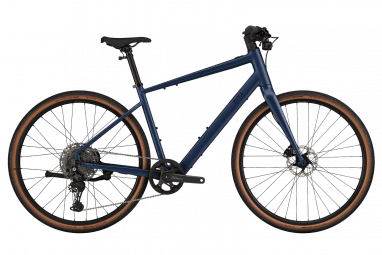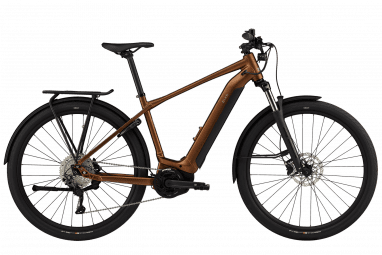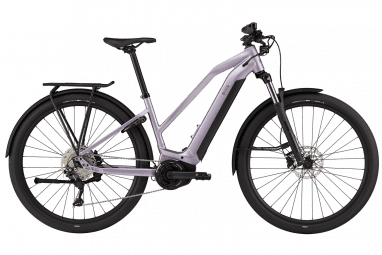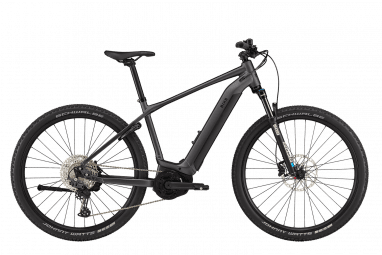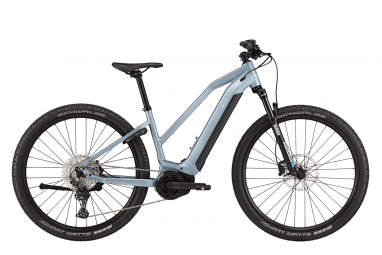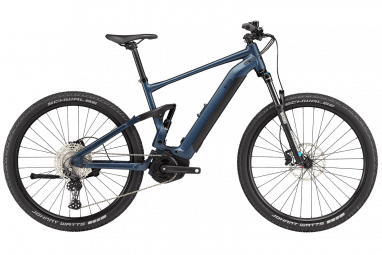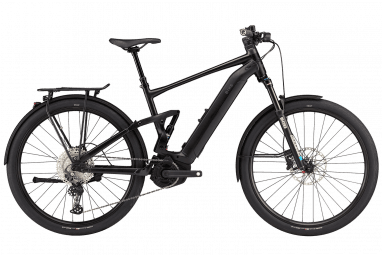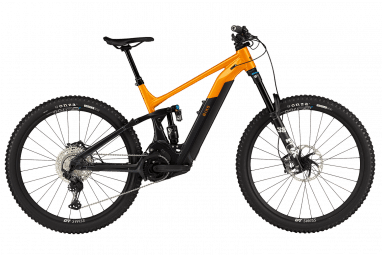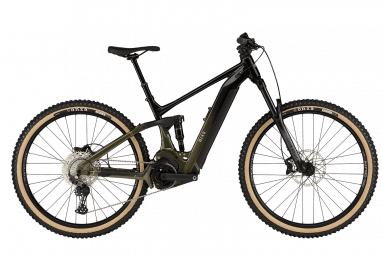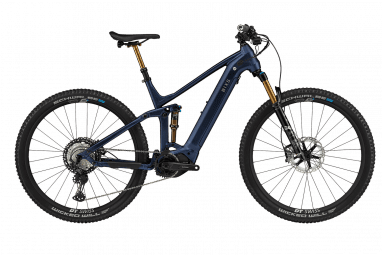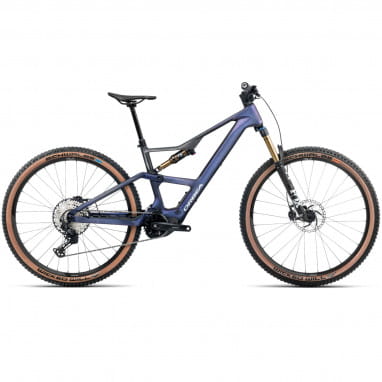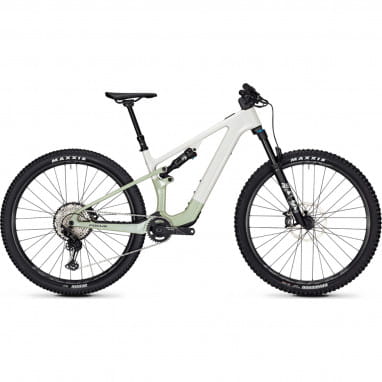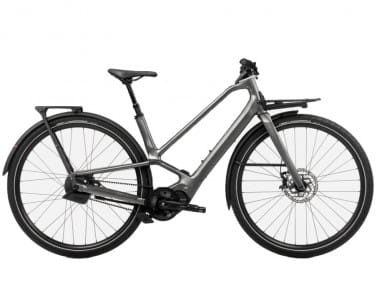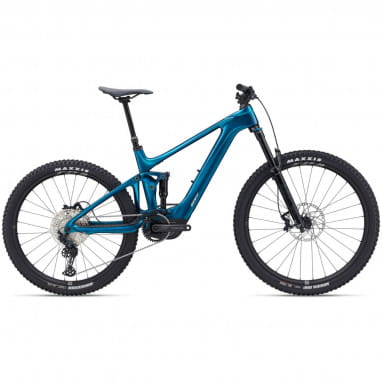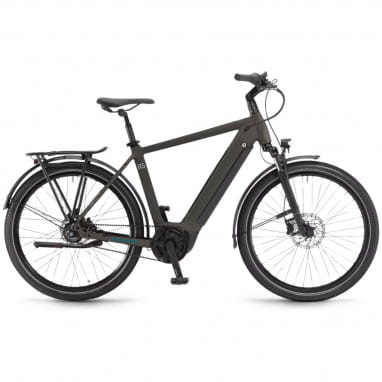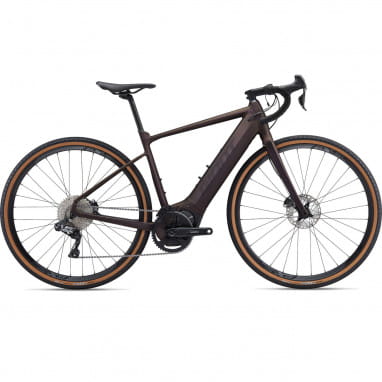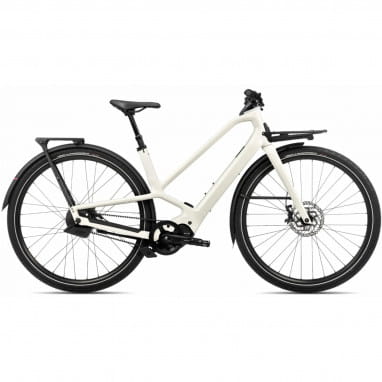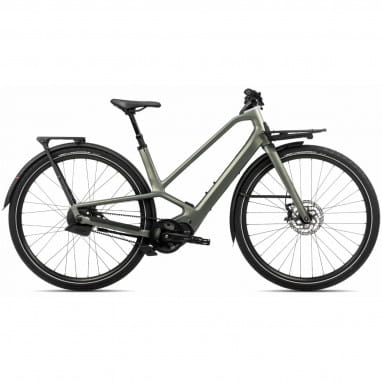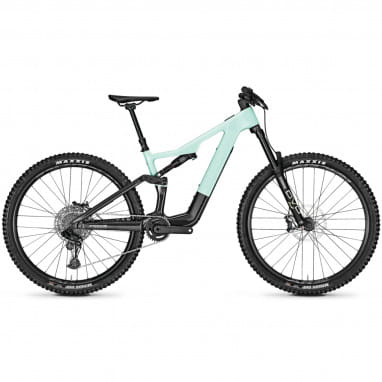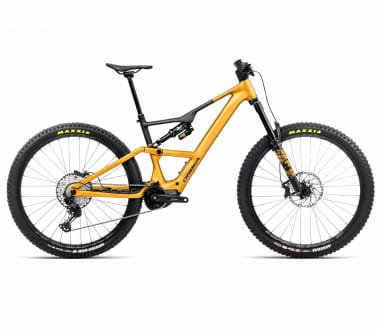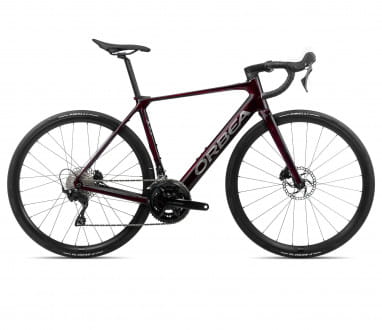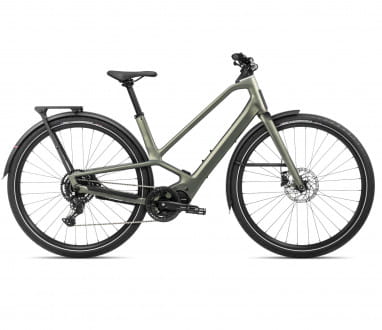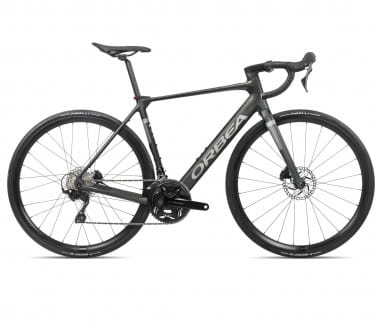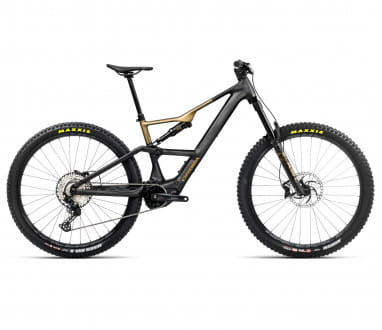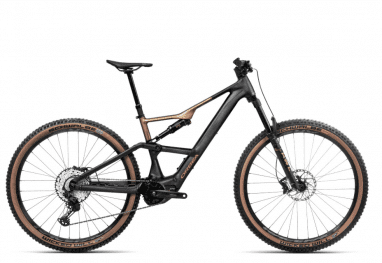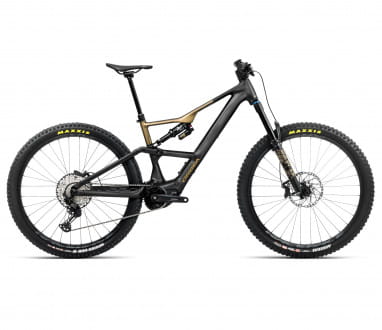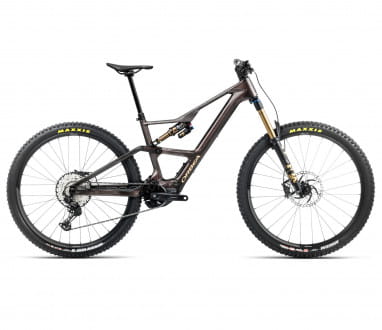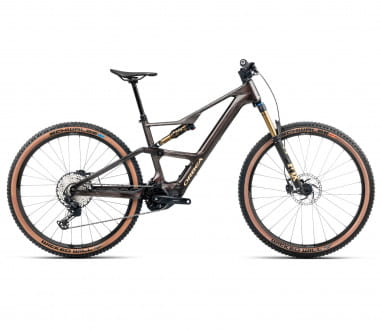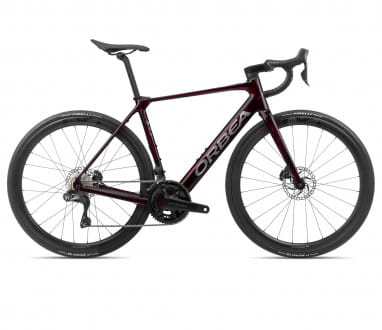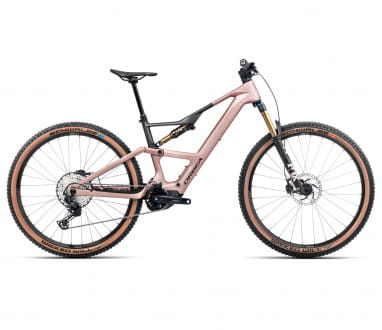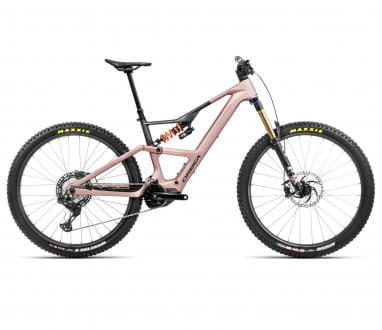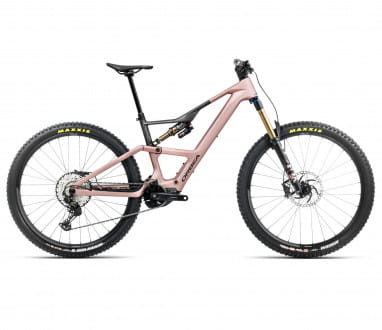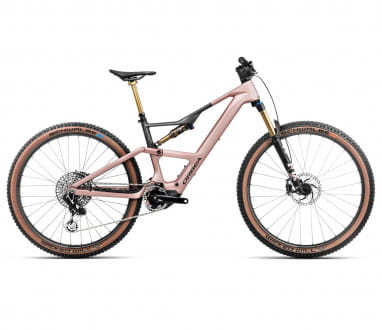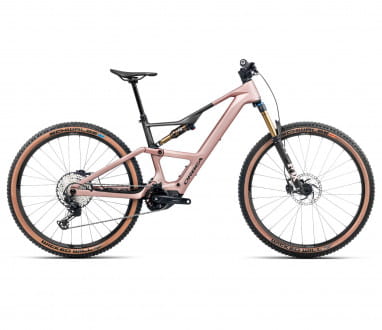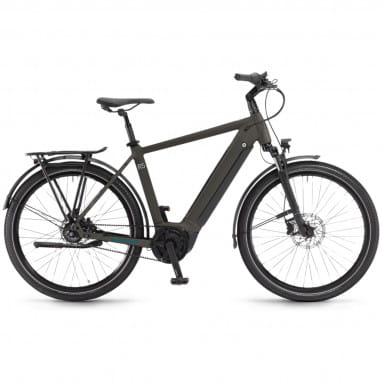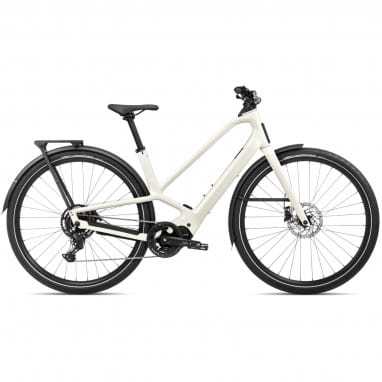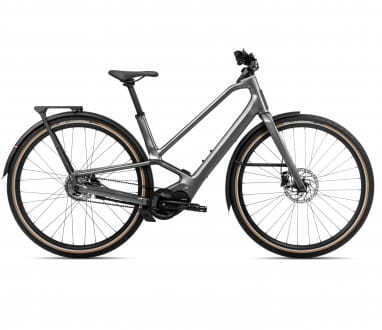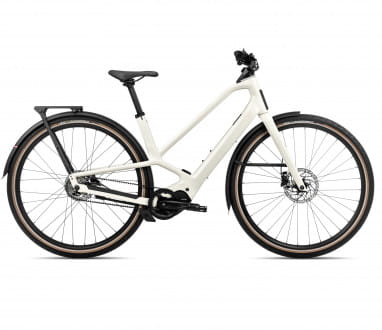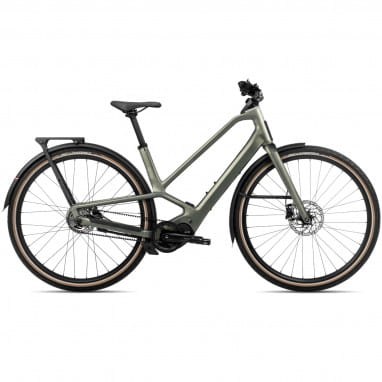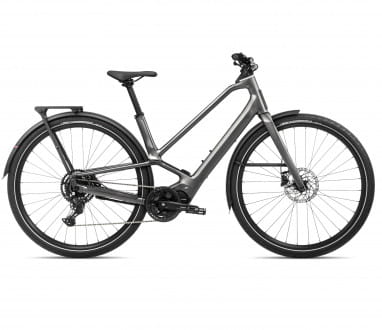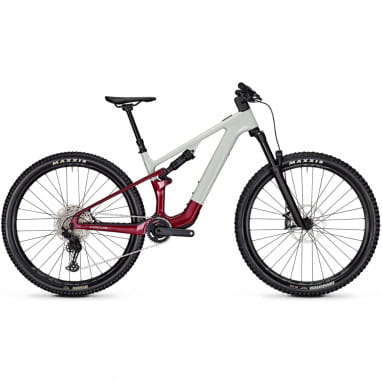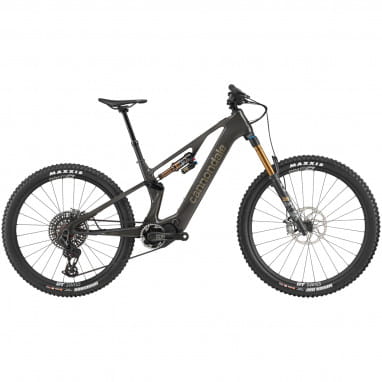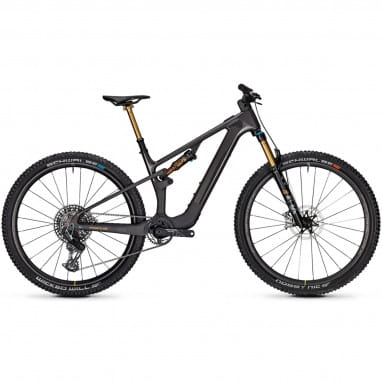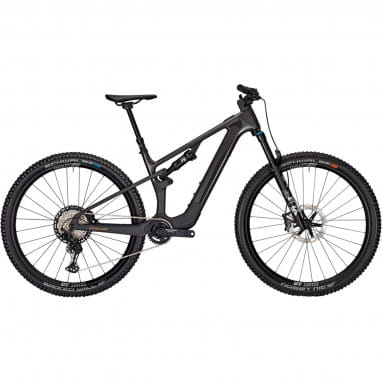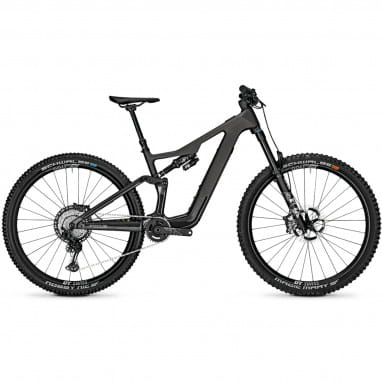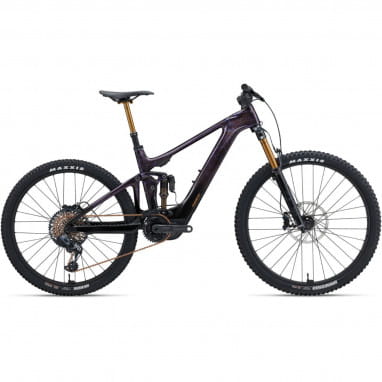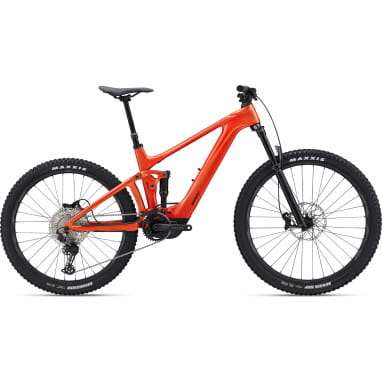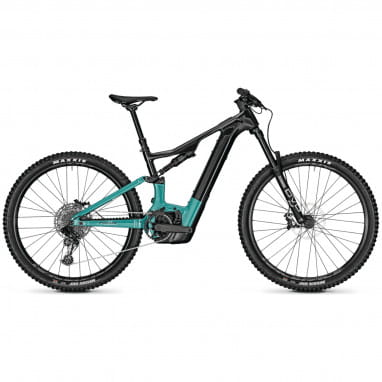A technical definition of an e-bike would sound something like this: it's a bicycle with a drive unit and a battery. And here’s an emotional description: an e-bike means effortless fun on two wheels.
Unlike other motorized two-wheelers, however, an e-bike only works while the cyclist is pedaling. No muscle power, no electric power! By the way, the engine will not make you go faster, but since pedaling is so much easier, e-bikers like to pedal faster which makes them go faster.
In recent years, e-bikes have broken all sales records they are on their way to replace cars as the most popular way to get around town. In 2020, 39% of all bikes that were sold in Germany were e-bikes, adding up to almost 2 million units sold. Many people simply can't imagine a life without an e-bike anymore, once they've got one. E-bikes make everyday life easier, they are great for leisure and commuting, they are eco friendly and incredibly practical.
But there are many different e-bikes out there. On the one hand, there are many different types of e-bikes, different motors and set-ups. Also, there are huge price differences.
Here you will find all you need to know when shopping for an e-bike and how to choose the one.
The shortcut:
This is an electric bike - important facts you should know about e-bikes
What is an electric bike or "e-bike", what is a pedelec, what is an s-pedelec?
Originally, the bikes were defined somewhat differently, but today the following distinctions are in use: An E-bike is a bicycle with electric drive unit, it is also called a Pedelec (PEDal ELEctric Cycle). It assists your pedaling efforts up to 25 km/h. An S-pedelec is a faster e-bike, it supports you at speeds of up to 45 km/h (Careful, different legal regulations apply to s-pedelecs!) If you go faster than 25 km/h or 45km/h, your bike won't perform a full stop, of course, but the assistance will stop.
Unlike a scooter, moped, or motorcycle, an e-bike's engine only assists you while you're pedaling.
Am I faster on an e-bike?
When you climb on an e-bike for the first time you might be skeptical at first. Will it really be that fast? Maybe even too fast?
No worries, here we can put your mind at ease. If you don't want it to, your e-bike won't go fast. You can even ride at a snail's pace and just enjoy the view. First of all, an e-bike drive won't do anything if you don't do anything. You will get assistance from the engine only when you pedal. The drive unit does not make you faster as such, it makes pedaling easier. So you will be faster with less effort and can easily conquer larger distances and slopes.
E-bike riders are not faster because the motor is pushing them, but because pedaling is less exhausting, and therefore they can pedal faster.
E-bike technology
Most drive units are located around the bottom bracket and transmit their power directly to the bike chain. They are called mid-drives. With each new generation, e-bike engines become lighter and smaller. They also become less noisy. You don’t want everyone to hear that you're getting a little help from an electric engine, right? Drive units are not allowed to work with more power, the maximum power of 250 W is regulated by law (at least in Germany). However, manufacturers can work with the torque, you'll find more on that below.
An engine weighs about 2 to 3 kilograms, the weight and dimensions depend on the manufacturer and the power output.
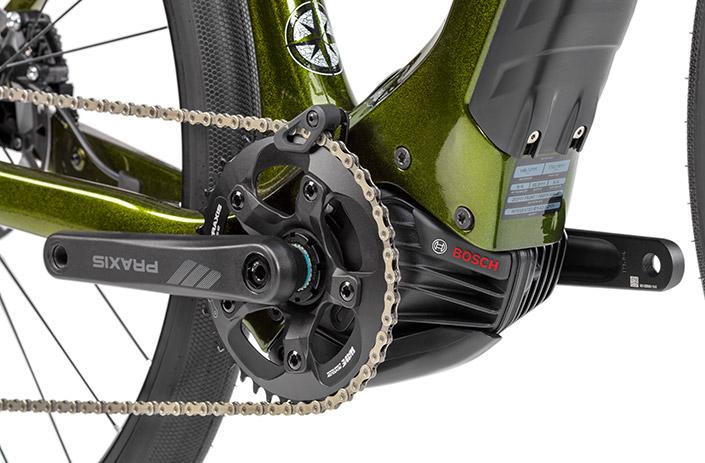
A drive unit turns your bike into an electric bike! Mid-drive motors are very common. Picture © Niner
The battery supplies power to your drivetrain. You need to charge it, then it allows you more or less range, depending on its capacity. How much charging capacity you need depends on how long and how far you want to ride. For shorter rides through the city a smaller battery is enough, for long tours with a powerful drive unit or with a lot of luggage you need a larger battery.
A few years ago, the batteries on any electric bike were easy to spot because they were mounted on the outside of the down tube or seat tube. Then the batteries were partially built into the frame, which made the frames somewhat feeble. This frame construction was called a „semi-integrated battery“, but it has gone a little out of style these days. Starting with the 2020 models, batteries are increasingly integrated, this means they are built into the downtube. There are also „luggage rack batteries“, but lately, these are a rare sight, because they let the the center of gravity of the bike travel to the back of the bike.
The battery also weighs around 2 to 3 kilos. The weight increases with the capacity.
The displays have two functions. Firstly, they are your control center. You can switch power levels either using buttons or on a touchscreen. Depending on the manufacturer and the model, the display also gives more or less detailed information about your trips. It tells you all about kilometers, remaining battery range, heart rate, outside temperature, burned calories, the time and more.
On newer electric bikes, your smartphone replaces the e-bike display. The bike and your phone are paired via Bluetooth, and then you control your drive unit with an app.
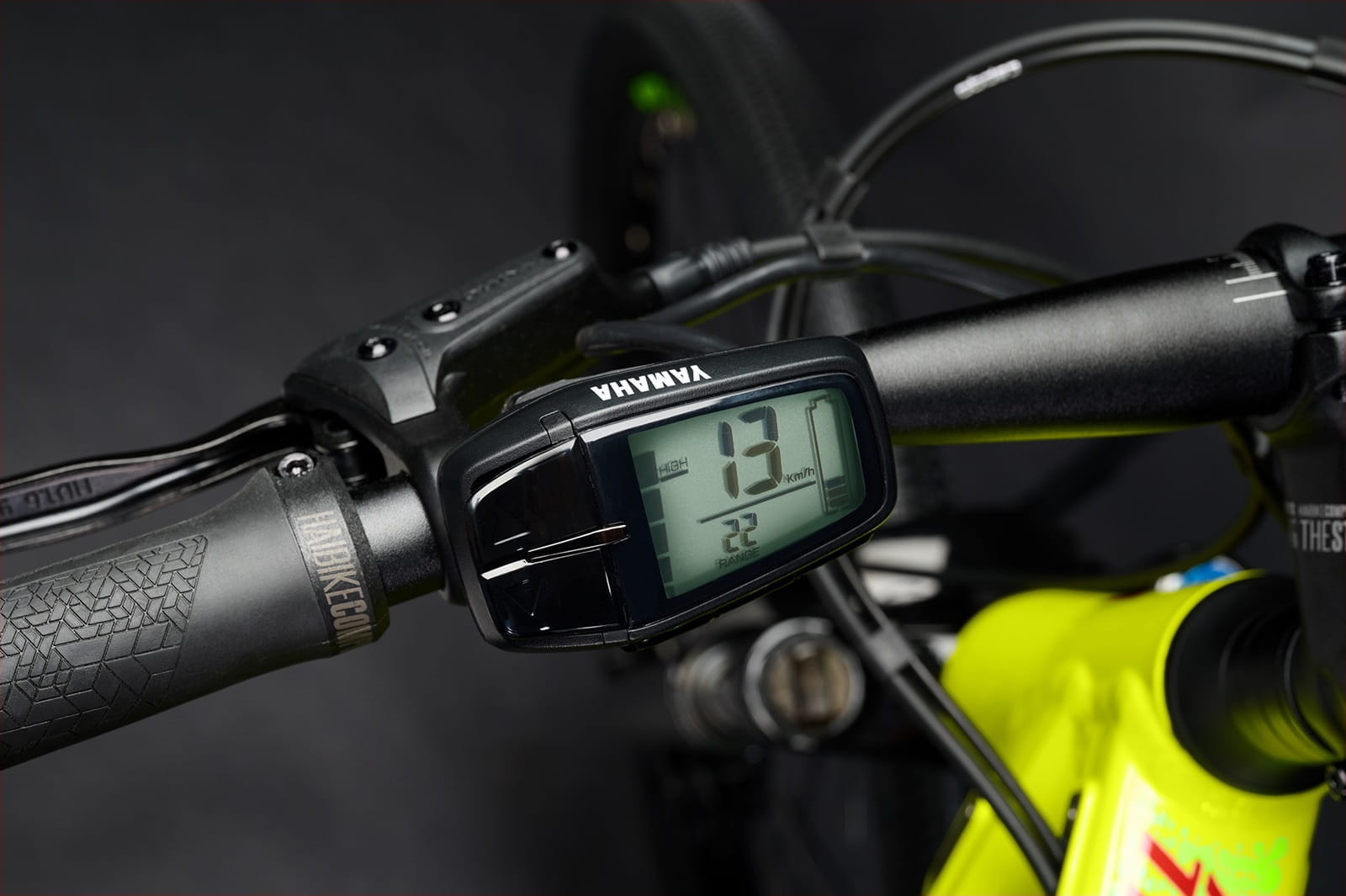
The e-bike's display and the controller can come in one piece or as two separate units. Picture © Haibike
You can control most e-bike drives with a few buttons on the display. Many bikes additionally have a controller within reach of your left thumb, so you can, for example, select the assistance level without taking your hand off the handlebars.
Somewhere around the bottom bracket, an e-bike has numerous sensors that read your pedaling movements, cadence, incline or speed. From the input, the computer determines how much support you need at any time. This helps you move forward while maintaining a natural riding experience. The less you notice of the engine’s assistance, the better these sensors do their job. They make sure you start to pedal easily or slow down smoothly and don't jerk forward or do involuntary full stops.
- Construction kit or ready-made system?
It depends on the manufacturer whether an e-bike drive unit is a system of battery, motor and display, or whether bike builders can mix and match different components to their taste. Bosch offers motors and batteries separately, a Shimano STEPS drive consists of all necessary components. Most of the time, though, you don't have to worry about choosing drive unit parts. When you buy an e-city bike or a touring e-bike, it is safe to assume that the manufacturers have selected the perfect motorization for your bike.
But e-bikes are constantly evolving, so there are more and more specific drive units. They are optimized for cargo bikes, e-mountain bikes or touring-e-bikes and deliver enough energy and battery power for where you’re headed.
- Which are the best drive unit brands?
Some of the most successful manufacturers for e-bike drive units are Bosch, Shimano and Yamaha. You'll find their drives on many of the e-bikes in our online shop. More and more bike companies develop their own drives in order to make them fit their bikes and their purposes perfectly.
Womens’ electric bikes and mens’ electric bikes
It is happening all over the bicycle market – womens' bikes and mens' bikes are gradually disappearing. The same goes for pedelecs. In many families, e-bikes are used by several family members, so unisex models are particularly popular amongst everyday bikes such as city-e-bikes or touring-e-bikes. But you will still find many womens’ e-bikes and bikes for men, so you can just buy the bike you feel the most comfortable with.
What numbers should I know?
The power a pedelec motor delivers is measured in watts. The maximum power is are 250 W, or 4000 W (or four times the rider’s power; for S-pedelecs). You can find more information on this below.
The torque describes the amount of force the engine can produce. High torque provides better acceleration and a more powerful, effortless driving experience. In difficult terrain and on steep climbs, lots of torque delivers significantly more riding fun, which is why e-mountain bikes in particular have a high power output of 70, 80 or even 90 Nm. Less torque of 50 or 60 Nm is meant for comfy rides on a city bike. Touring bikes and trekking bikes are somewhere in between.
Eco or Sport, Boost or Walk, every manufacturer has different names for the support levels of their drive units. What they all have in common is that you can choose how much assistance you want. A high support level means you don't have to do much, while the engine works a lot. At a low support level, the engine does get a rest, while you get a workout.
With less assistance you also have to work harder, but the battery will last for more range. If you like to cruise along with lots of support, your e-bike will need to be charged more often.
Battery power is measured in Wh. A "small" battery is rated at 300 Wh, while a "large" battery has 650 Wh. If you're planning to ride big tours or need to move a heavy cargo bike, it might be worthwhile to pack a second battery or buy a dual-battery system, and thus doubling your range.
The battery's charging capacity decreases over time. You can charge a modern lithium-ion battery about 1,000 times before sehe decrease starts to show. But don't worry, even after 1,000 charging cycles your e-bike will still go long distances. The distance will just shorten gradually, and at some point you will need to replace the battery. Usually it takes several years before you will even notice the decrease in battery capacity!
And you can extend your battery’s life: never empty you battery completely, protect it from icy temperatures and heat, and if you know you won’t ride for more than a few weeks, you should remove it and store it charged to somewhere between 30% and 80%.
If you use the original charger and unplug it immediately after the battery is fully charged, you will be able enjoy the great ranges for a long time.
Light e-bikes –a trend in 2023?
Many e-bikers only need support when things get "critical", on short, steep climbs or at the end of a long, exciting day out biking. And the rest of the time? You carry all that technology around for nothing. This is where light e-bikes come in. Why would you bring along a heavy drive unit if you don't need it most of the time? Why should your bike sport a big battery with lots of charging capacity if you're only going to ride short distances? With their small, lightweight engine „light e-bikes“ help out when things get tricky. So far, these bikes are only available as light e-mountain bikes, but we may soon be spotting more of the lightweight speedsters!
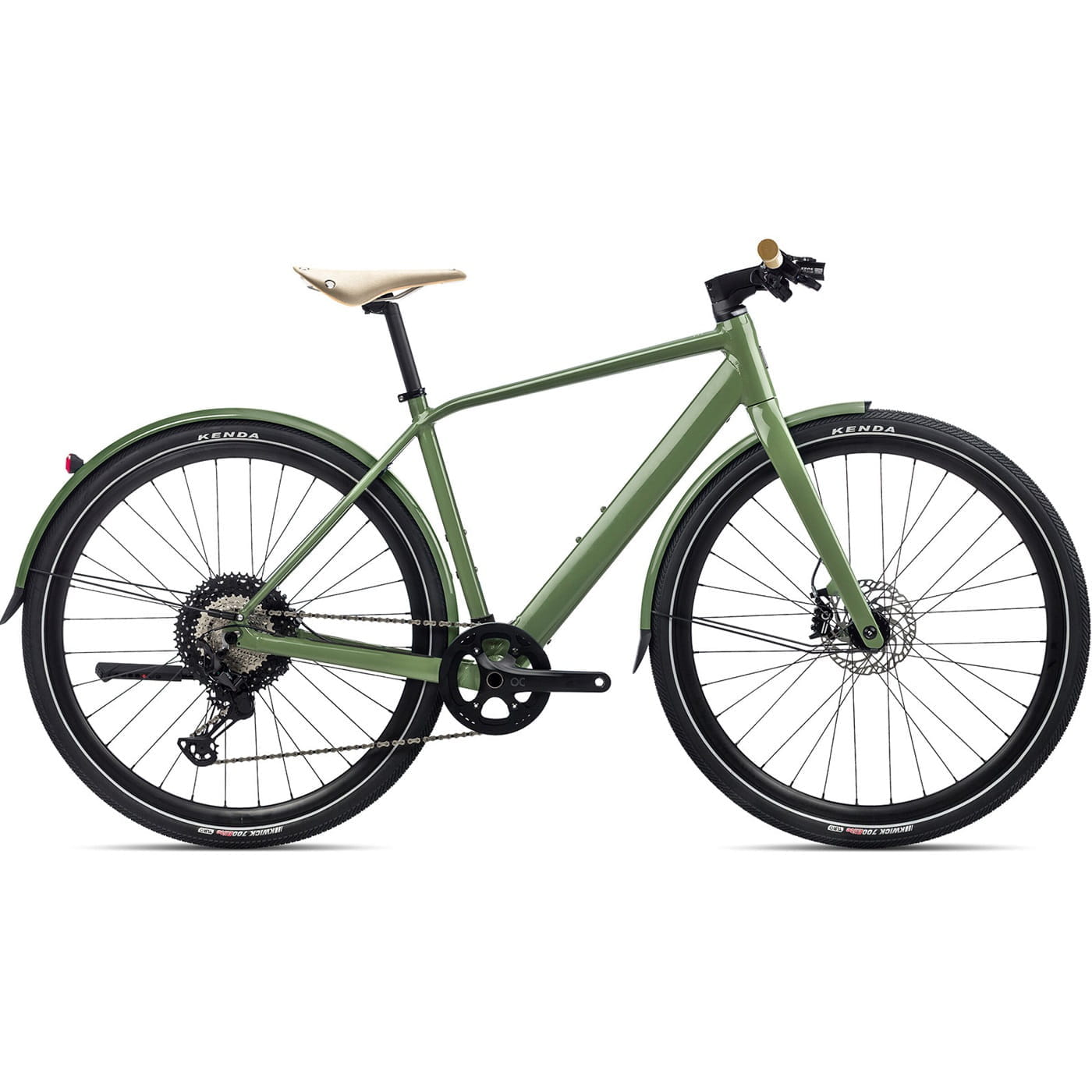
It may look like a bike, but it's really an elctric bike! Light e-bikes are not only lightweight, but also absolute eye-catchers. Picture © Orbea
The law…
Like all other means of transport, e-bikes must meet legal requirements. On the one hand, they must meet usual regulations for bicycles. Any bike must have two brakes, lights, a bell or horn and so forth. The same rules apply to e-bikes. The drive unit can have a maximum power of 250 watts. An s-pedelec will support you with up to 45 km/h and 4kW, or four times the rider's power.
With s-pedelecs, different rules apply, riders are required to wear a helmet, there is also a minimum age for the rider. You should do some additional reading before buying a fast e-bike!
Why does an e-bike even need a gearshift?
An e-bike doesn't just have support levels, there is a gearshift too. And you should use it! It adjusts the bike to the terrain and surface, it helps you tackle inclines or difficult surfaces. It reduces wear and tear on the drivetrain, and pedaling in the right gear lets your engine use less energy and makes your battery last longer.
You will find hub gears, derailleur gears or electronic gears on e-bikes.
A hub gear is particularly convenient to use because it has a twist grip next to your grip There are only a few speeds to choose from. Hub gears go well with less speed, easy terrain and a small drive unit. They also can work with coaster brakes. They are therefore perfect for e-city bikes and urban e-bikes.
A derailleur is a better choice for performance e-bikes, it is perfect for pedelecs with lots of power and lots of torque. It works better at higher speeds and off-road riding.
An electronic shift does not shift by lever and cable, you simply push a button. It can also provide a shift recommendation. If you like to forget about shifting because your e-bike rides so effortlessly anyway, an electronic shift can be a great investment. Smart shifters register how fast you're going and shift down a few gears when you stop at a traffic light, for example, making it easier to get going again.
What is „Walk“?
An e-bikes tend to be quite heavy, they weigh in at around 20 kilos or more. To help you push it comfortably down the sidewalk, most modern e-bikes have a „walk“-button. When you push it, your e-bike rolls along beside you at walking speed. It helps you get your e-mountain bike over the bits that are just too tough to ride could or helps you park your bike in the basement for the winter.
All in all, an e-bike is a bicycle with an electric drive unit. It assists your pedaling efforts and lets you ride somewhere between easy and completely effortlessly. There are e-bikes in all popular bicycle categories. "The e-bike" per se, therefore, does not exist.
Is an electric bike the right bike for you?
At this point, you must first make a basic decision: E or bio? You want to ride it easily, transport even heavy loads without breaking a sweat or make it up larger climbs? You want to go on bicycle tours, but your fitness has seen better days? You want your bike to replace your car or the bus? It doesn't matter if your bike weighs a few extra kilos? The higher price doesn't scare you?
> Sounds like you'll be happy with an e-bike!
Sweat is great, you like to combine your commute to work with a morning workout? You want to service and repair your bike yourself? Steep slopes get you going? Your bike parks in the basement or has to go up a few steps every now and then, so it should be especially lightweight? You want a bike that is as cheap as possible?
> Then an unmotorized "bio-bike" is perfect for you!
You will find e-bikes in every bike category these days. Just like other bikes, there’s the perfect e-bike out there for every rider or purpose. Here's a quick overview of the abilities of the most popular bikes:
|
E-touring-bike
|
E-city bike/E-urban bike
|
E-MTB
|
- comfortable on long rides
- straight to slightly stretched riding posture
- changing seating positions are possible
- derailleurs with many speeds
- large batteries with great ranges
- comes with safety equipment, lights, fenders
- mounts rear and front racks
- low priced bikes available
|
- upright riding position
- comes with safety equipment, lights and reflectors
- comes with rack and mudguard
- smaller, inexpensive engines
- smaller, lightweight batteries
- low maintenance hub gears available
- low priced bikes available
- not off-road ready
- less range
|
- moderate to low, stretched riding posture
- perfect for off-road riding
- available as full suspension or hardtail bike
- powerful motor
- large battery capacity
- derailleur with many speeds
- usually not for everyday use
- higher price
- heavy
|
|
suitable for:
bike trekking, day trips, city, easy terrain, dirt and forest roads, everyday riding, bikepacking
|
suitable for:
short trips, city and countryside rides, day trips, everyday rides
|
suitable for:
training, off-road riding, ascends and descents, XC, race or enduro and other
|
E-MTBs, city e-bikes and touring e-bikes are the most popular e-bikes. But of course, there are other types of e-bikes as well. If you like to go fast, you can buy an e-road bike. If you have a lot of luggage or several children to transport, a cargo e-bike is perfect for you. A folding e-bike is very small.
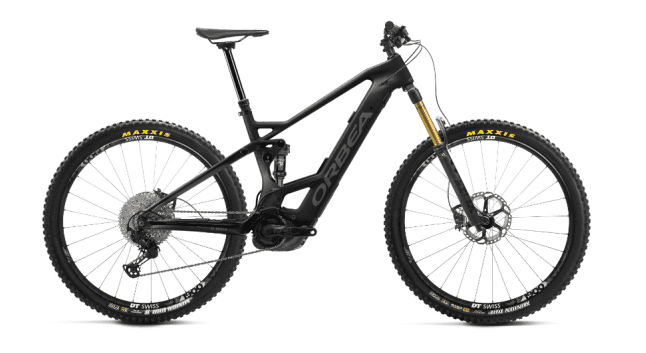
Whether you want to go offroad biking on a fully or top speed on a road bike – you can buy the perfect electric bike for any kind of riding plans! Picture © Orbea
That’s an e-bike:
- bicycle with electric drive unit
- bikes for different riding styles are available
- from everyday commuting to top-performance, there are many different bikes available
How does it feel to ride an e-bike?
Easy. That's how it rides.
The drive units improve every year. The sensors become more sensitive in determining how much assistance you need at any given moment. Bike computers are more and more accurate at distributing the power the engine requires. Jump starts were a problem in the past, a modern e-bike accelerates smoothly. Riding it feels like on a normal bike, just more effortless.
A different question is „How far does an e-bike ride“? The range is the number of miles you can get out of one battery charge. How much range you can get out of your battery depends on many factors. The weight of the bike and rider, the surface, the size of the engine, and even the direction of the wind are all factors that determine how far you can go. You can extend your range by riding on a low support level and not forgetting to change gears.
The position of the battery also influences the way a e-bike is balanced, that’s why few batteries are mounted on the rear rack, most of them disappear in the downtube these days.
The position of the engine significantly affects the riding characteristics of the e-bike. There are three possible places: a front drive unit is located on the front axle. You’ll find a mid-drive at the bottom bracket. A rear drive is mounted on the rear axle. In recent model years, mid-drives have become increasingly popular, you’ll find these drive units on most high quality e-bikes. One of the most important advantages of mid-drives it that they do not interfere with the balance of the bike. A mid-motor gives the bike a centered, low center of gravity and „natural“ driving, like you'd get from a regular bike.
We mentioned it earlier, you don't have to worry about jumping and jerking performed by the engine on modern e-bikes. The drive units engage smoothly and linearly into your pedaling efforts, they also reduce assistance smoothly when you hit the brakes.
Due to the motor, battery, wiring and so on an e-bike weighs more than an average bike. The engine compensates for the weight increase, so don’t let that scare you. An average e-bike weighs 20 to 25 kg, expensive carbon models are usually a little lighter, but e-bikes almost always break the 15-kilo mark.
How it feels to ride an e-bike:
- light and effortless or a real challenge (if you turn off the drive unit)
- the handling depends a lot on what kind of e-bike you buy
- the position of the engine affects the driving
- the motor provides little to powerful support, depending on what support level you choose
- driving an e-bike feels pretty much like riding a normal bike, it’s just easier
What are the advantages of an e-bike?
Eco friendly and cheap transport, fun even when you're less fit, no more searching for parking spaces, no traffic jams … the benefits that an e-bike can offer are convincing. But that's not all, because since e-bikes are available in many different categories, there are also all the advantages of a trekking bike, an MTB, an urban bike, and so on. For more information, check out the buyer’s guides for bikes on BMO.
How much does an e-bike cost?
Compared to a bicycle an e-bike will cost more, that’s true. But don’t forget the money you will save on gasoline or bus tickets if you do your commuting by e-bike in the future. E-bikes for less than 1600 Euros will probably not live up to your expectations. The components might turn out to be rubbish, they are often cheap imports and no-name products, which bring more trouble than riding pleasure in the long run. This is not true for good bikes that you can find on sale, however! Low-priced, good e-bikes start at 1600 Euros. If you seldom use your bike, these bikes are a good choice. However, the more often and longer you want to ride your bike, the more money you should spend.
In the entry-level class from 1600 to 2000 Euro you will find many bikes that let you test e-biking or let you covering shorter distances every day. You'll get mechanical disc brakes and simple but ok gearshifts. These bikes are usually quite heavy, weighing over 20 kilograms. Here you can find e-citybikes and simple touring bikes.
For 2000 and up to 3500 Euros, you’re buying a middle class e-bike. You can expect better gearshifts and brakes, the batteries have more capacity, so your range increases. Especially if your e-bike will replace a car, and you need it every day, you should not buy a cheaper one.
Top e-bikes are available from 3500 Euros upwards. You’ll get top-range bicycle components, brakes and gearshifts. In this price category you can buy long-distance touring bikes that promise days of riding fun and e-hardtails on end. Powerful motors and large batteries allow for long riding hours. Bike and components are not only getting more comfortable, they are, above all, getting more reliable.
By the way, as in all bike categories, there is no upper limit. You can easily spend five figures if you want to. E-road bikes, s-pedelecs and full suspension e-bikes are hardly ever bargains.
In addition to the purchase, you should consider the cost for maintenance and service costs, because if you are not an experienced mechanic, you should have this done at a bike workshop. Also, a new battery will be due after a few years. Charging costs for the battery, on the other hand, are not too high.
If you are not sure whether you really enjoy riding an e-bike, our suggestion is that you first buy a cheaper bike. This way you can test it to find out if you like riding it frequently. If you find it's worth the hype, you can switch to a higher-quality pedelec. You can then sell your used entry-level bike, and still get a good price for it.
Price categories for e-bikes:
The difference between e-bikes and other forms of transport
In our other bike categories, we have compared different types of bikes at this point. E-bikes exist in every bike category, we've already explained that above. We therefore compare them here with other modes of transport:
An e-bike compared to a bicycle
A bicycle is practical and quite cheap compared to a car. However, it also has disadvantages. Exercise in the fresh air is nice, but arriving at work all sweaty is not a always good idea. And if you have a lot of stuff to transport or live in a hilly area, you usually end up hopping in the car, despite your best intentions.
This is where an e-bike can work wonders! You can buzz over to work, haul the kids and all they need to kindergarten, and conquer inclines effortlessly. You decide how much of a workout you’re getting, because you can decide which support level you use.
E-Bikes and cars
Cars are much more expensive to buy. They need costly repairs, you pay taxes and insurance, plus they guzzle gas. Financially, an e-bike is by far superior to a car.
On top, an e-bike is also a good choice if you want to travel eco-friendly.
While motorists get stuck in traffic jams or spend hours looking for a parking spot, you can use bike racks and bike lanes.
Admittedly, if it's raining, a car is dry. But have you checked out the rainwear here on BMO? With the right jacket, a little rain won’t matter.
Public transport
No crowds, no germs, no departure times. There's a whole lot of advantages that an e-bike has, compared to bus, train or subway. Studies have shown that time and again that cyclists arrive at work happier and more relaxed than drivers or passengers in public transport.
How to find the perfect e-bike?
As more and more e-bikes crowd the catalogs of bike manufacturers, it's often hard to choose, after all, you can only take one bike home.
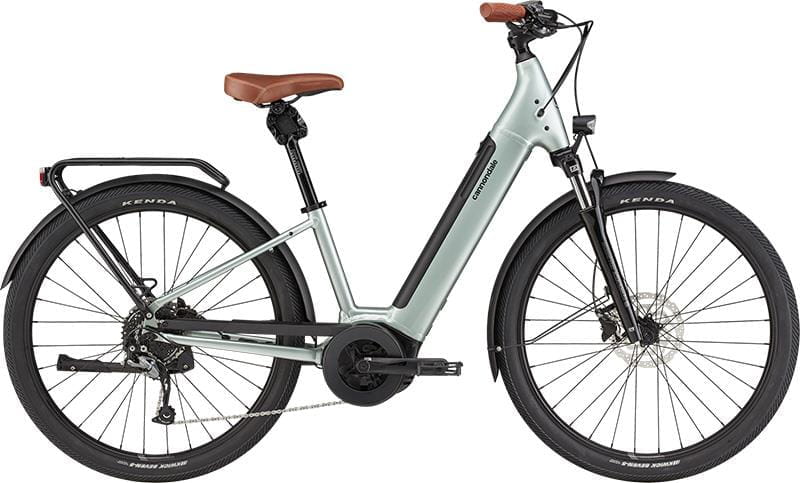
Is a comfy city-e-bike the right ride for you? Or should you buy a high-tech ra�cer? Picture © Cannondale
With a few simple questions you can quickly find the right e-bike:
- How often do you plan to ride your e- bike?
Your e-bike is used only every now and then, you ride short distances and make only smaller trips? In this case, probably an entry-level pedelec is enough for you. You regularly ride medium distances? You depend on your bike every day? Then you should buy at least a medium range bike. If an outstanding performance is important to you, you plan to go very long distances or you want to enjoy to a lot of comfort in handling and riding, a high-end e-bike is the right choice.
- How long will your tours last?
The longer you want to be out there on the road, the more worthwhile every Euro you invest in your bike! Comfort in the saddle, easy riding and handling not only improve with each new model, but also with the price.
- Where do you want to ride, what are the surfaces like?
We have already mentioned this above, different e-bikes work best on different surfaces. For city and countryside tours, a city e-bike is perfect, for bikepacking buy a touring e-bike and for your off-road adventures you need an E-MTB.
- What is the right frame size?
Of course, e-bikes come in different frame sizes. Depending on the manufacturer, you will find specifications from S to XL much as you know it from clothing. Sometimes, the frame size can be specified in centimeters or inches, sometimes the size refers to the diameter of the wheels. Small E-bikes start from (wheel size of) 26 inches, they are suitable for smaller adults and teenagers.
- Which is the best drive unit?
When you’ve decided on the shape of your e-bike, comes step 2, you get to pick a drive unit that fits your plans. "The best drive unit" as such does not exist. There is, however, the wrong engine. A drive unit with too little power for your bike adventures is no fun to ride. An engine that is too powerful will only cost you more money and waste battery capacity. Manufacturers usually choose drives to match their bike models, so you don't have to worry too much about that. If you pick the right e-bike and go with a motor from a well-known manufacturer, you'll probably be very happy.
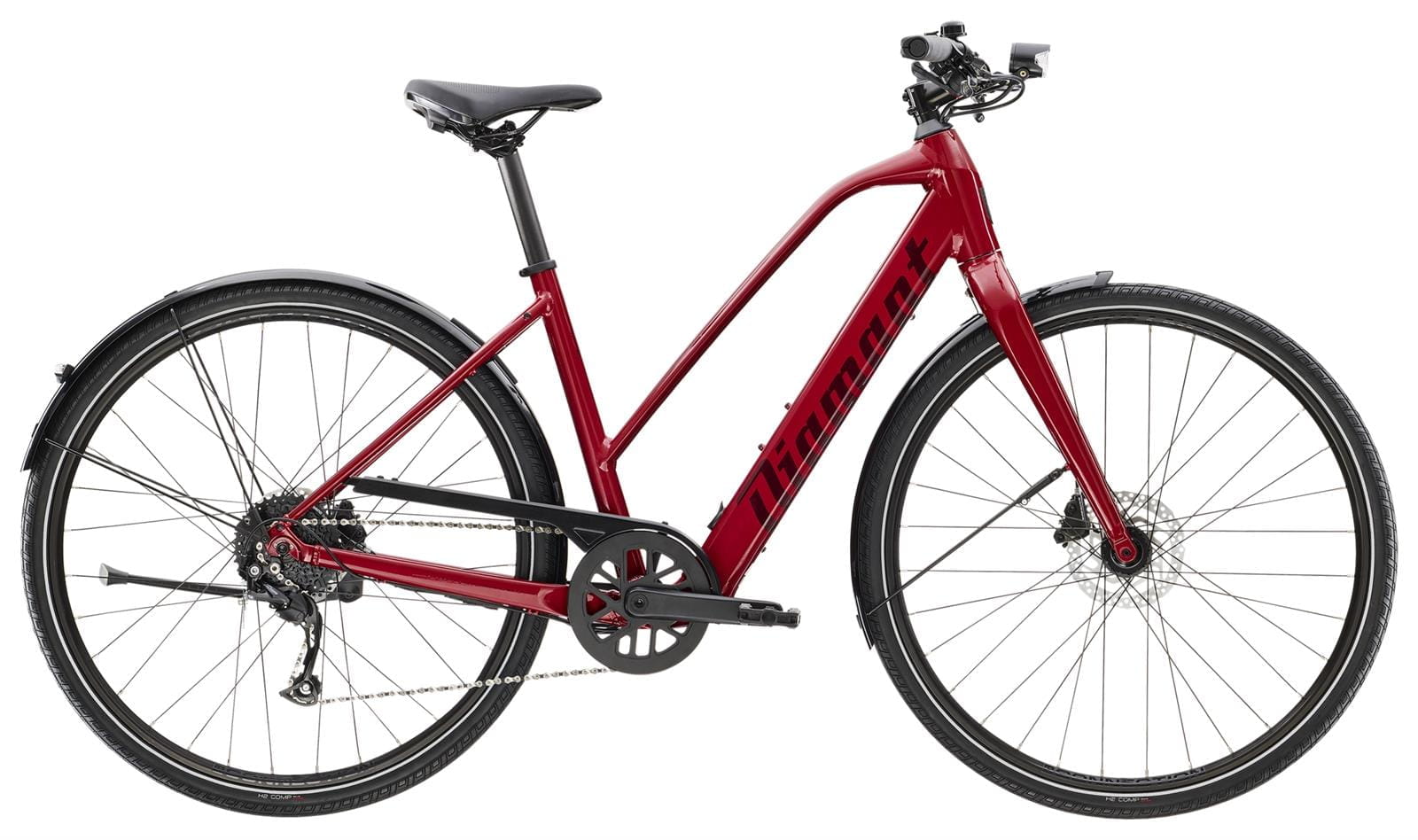
Apart from its performance the weight and size of the electric drive unit are important factors. Modern hub motors like this one are more or less invisible. Picture © Diamant Rad
- Which is the best electric bike?
Tests, reviews, experiences- there are many ways to help you find a good e-bike you can rely on. But even if you buy a test winner, there’s no guarantee that you'll actually like your e-bike. All in all, the best electric bike is the one you feel really comfortable on.
Buy an e-bike from the top brands
Since the bike season of 2020, every bike manufacturer has e-bikes on offer, usually there many different models. At the same time, each bike company approaches their range of e-bikes a little differently. Some manufacturers change their normal bikes, make some little tweaks and simply add drive units. Other bicycle manufacturers build e-bikes from scratch. Still others build pedelecs only. Here you'll find the latest models from Giant, Orbea, Trek, Haibike, Diamant, Liv, Cannondale or Winora, we always have great bargains in our sale.
If you're still not sure which type of e-bike is right for you, it's easy to compare bikes and e-bikes on BMO. We’ll tell you how mountain-e-bikes, urban-e-bikes and city-e-bikes, touring-e-bikes work, and what electric road bikes have to offer. Just read our buyer’s guides, then you're sure to find your dream e-bike quickly.
Please note that we cannot any make any binding statements on laws and regulations.




